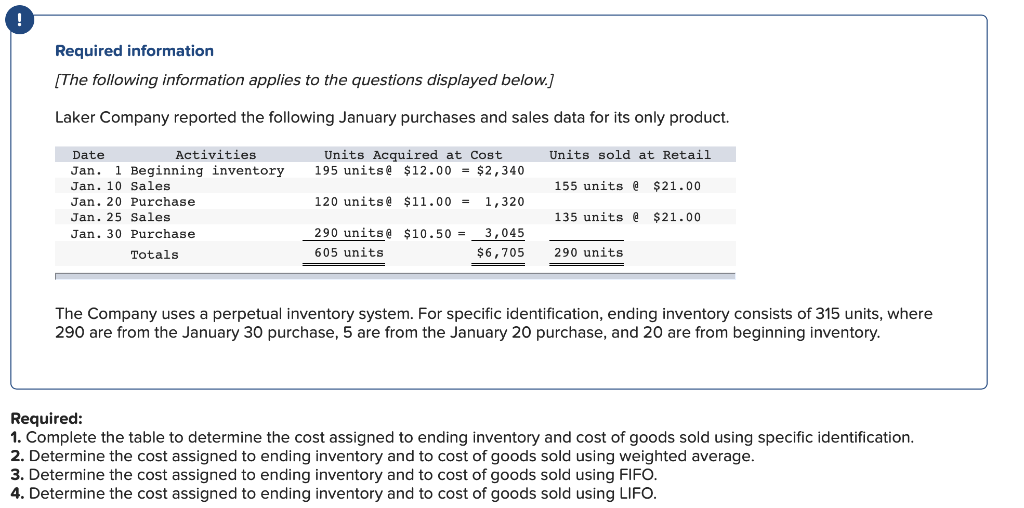
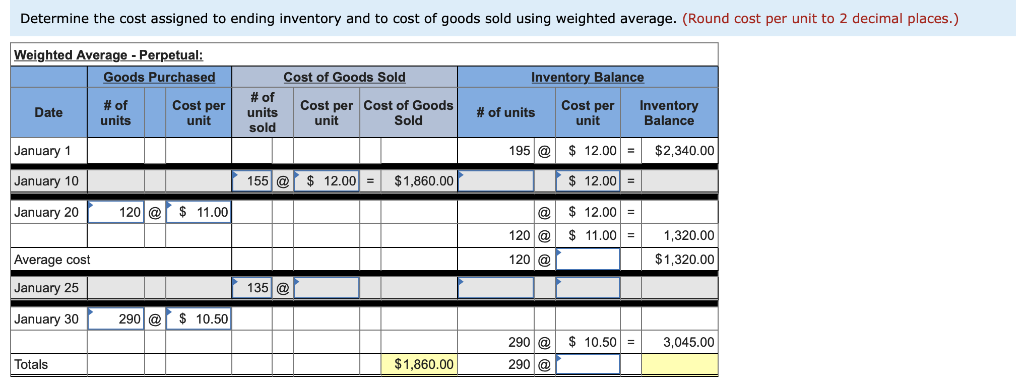
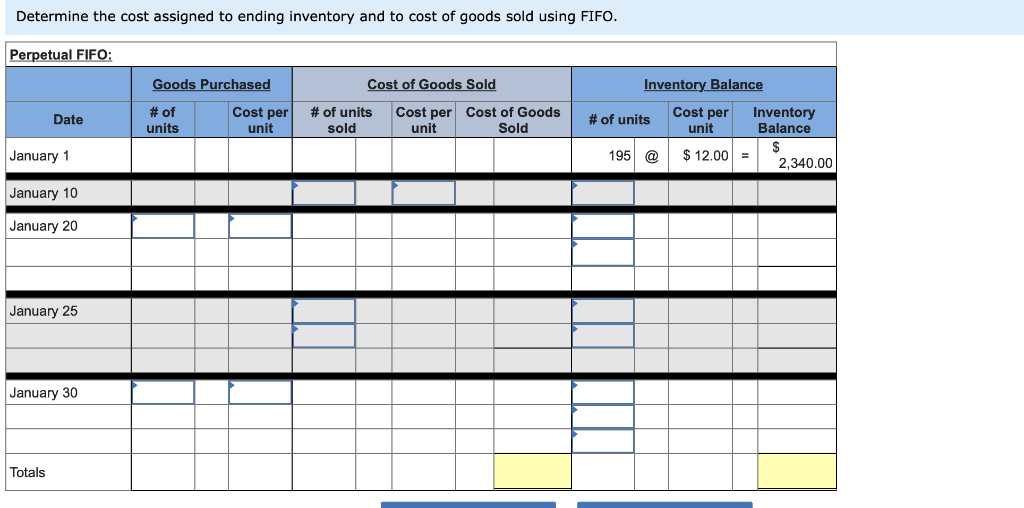
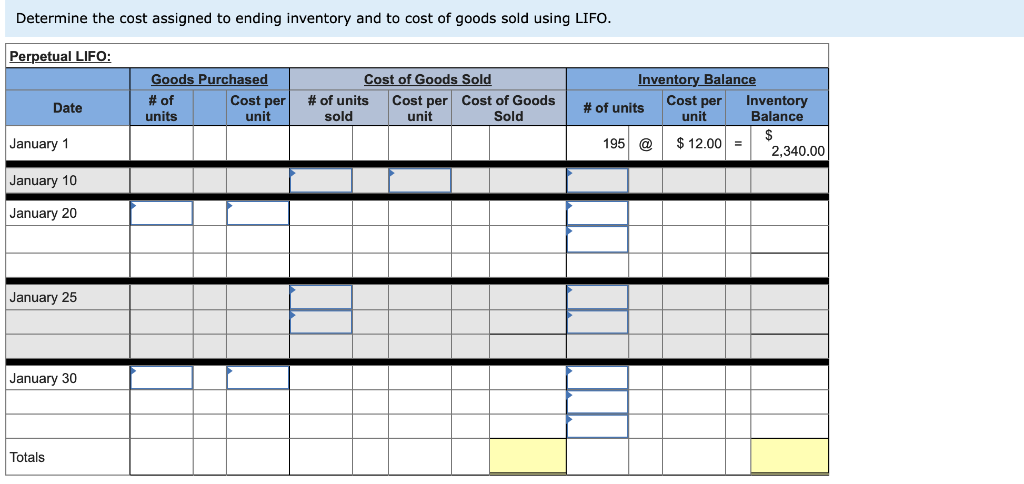
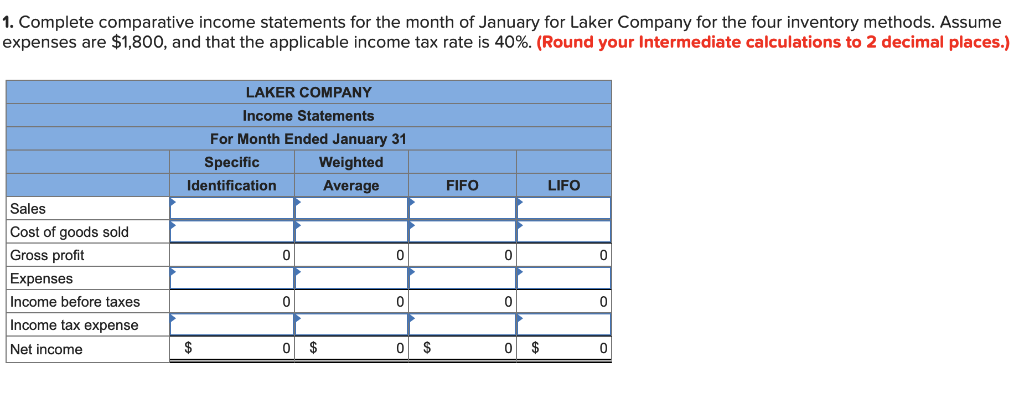
Required information [The following information applies to the questions displayed below.] Laker Company reported the following January purchases and sales data for its only product. Activities Units Acquired at Cost 195 units $12.00 = $2,340 Units sold at Retail Date 1 Beginning inventory Jan Jan. 10 Sales 155 units @ $21.00 120 units@ $11.00 = Jan. 20 Purchase 1,320 135 units a $21.00 Jan. 25 Sales 290 units 3,045 Jan, 30 Purchase $10.50 = 605 units $6,705 290 units Totals The Company uses a perpetual inventory system. For specific identification, ending inventory consists of 315 units, where 290 are from the January 30 purchase, 5 are from the January 20 purchase, and 20 are from beginning inventory. Required: 1. Complete the table to determine the cost assigned to ending inventory and cost of goods sold using specific identification. 2. Determine the cost assigned to ending inventory and to cost of goods sold using weighted average. 3. Determine the cost assigned to ending inventory and to cost of goods sold using FlIFO 4. Determine the cost assigned to ending inventory and to cost of goods sold using LIFO Determine the cost assigned to ending inventory and to cost of goods sold using weighted average. (Round cost per unit to 2 decimal places.) Weighted Average - Perpetual Goods Purchased Cost of Goods Sold Inventory Balance # of units sold Cost per Cost of Goods unit # of units Inventory Balance Cost per unit Cost per unit Date # of units Sold 195 @ January 1 $2,340.00 12.00 January 10 155@ 12.00 $1,860.00 12.00 12.00 120@ $ 11.00 January 20 a 120@ 11.00 1,320.00 120@ $1,320.00 Average cost January 25 135@ 10.50 January 30 290@ 290@ $10.50 3,045.00 290 $1,860.00 Totals Determine the cost assigned to ending inventory and to cost of goods sold using FIFO Perpetual FIFO: Goods Purchased Cost of Goods Sold Inventory Balance Cost per unit Cost per # of #of units Cost of Goods Cost per unit Inventory Balance Date # of units units unit sold Sold S $12.00 January 1 195 2,340.00 January 10 January 20 January 25 January 30 Totals Determine the cost assigned to ending inventory and to cost of goods sold using LIFO. Perpetual LIFO Cost of Goods Sold Goods Purchased Cost per Inventory Balance #of units Cost per unit Cost of Goods #of Cost per unit Inventory Balance Date #of units units unit sold Sold $12.00= January 1 195@ 2,340.00 January 10 January 20 January 25 January 30 Totals 1. Complete comparative income statements for the month of January for Laker Company for the four inventory methods. Assume expenses are $1,800, and that the applicable income tax rate is 40%. (Round your Intermediate calculations to 2 decimal places.) LAKER COMPANY Income Statements For Month Ended January 31 Weighted Specific Identification Average FIFO LIFO Sales Cost of goods sold Gross profit 0 0 Expenses Income before taxes Income tax expense 0$ 0$ Net income $ 0











